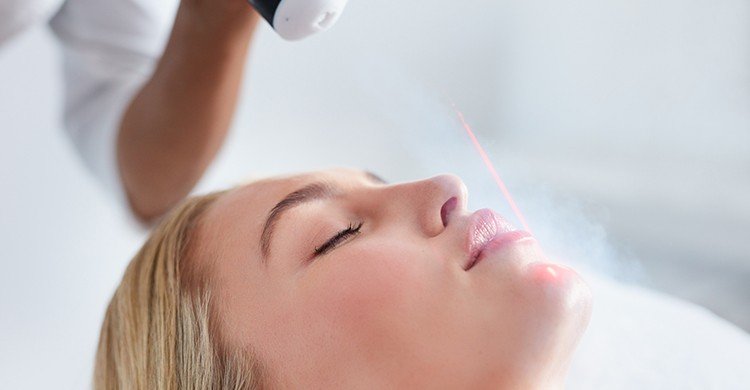Imagine you could take all your skin concerns—hyperpigmentation, acne scars, dullness, fine lines—and peel them all away to reveal a new layer of glowy, healthy skin. That’s essentially what Fraxel lasers do. Which is why the on-the-rise treatment has become a solution for people serious about blasting away imperfections for good. “I use Fraxel literally everyday,” NYC-based dermatologist Marnie Nussbaum tells ELLE.com. “My best patients are the acne scarring patients who can’t believe that something has given them such a rush of self esteem. And the photo damage patients getting their skin to a neutral tone instead of being speckled is really satisfying to them. People are really happy with it.”
It can be intimidating to undergo a procedure like this so we went to Nussbaum to break down everything you need to know before trying Fraxel.
What do Fraxel lasers treat?
Nussbaum says most patients come into her office seeking Fraxel laser treatments for three reasons: hyperpigmentation or sun damage, wrinkles, and acne scarring. People most commonly have lasers applied to their whole faces, but the neck, décolletage, hands, and arms are also popular areas to treat.
For textured acne scars, in particular (think: icepick, boxcar, and rolling scars), lasers are more effective than any topical treatment. “Being able to go that deep allows you to really break up that scar tissue that’s clouding the textural difference, whereas a cream wouldn’t be able to,” Nussbaum explains.

Are there different types of fraxel lasers?
Nussbaum says the Fraxel dual laser is the type you commonly find in dermatologists’ offices. It features two lasers with different wavelengths in one device: One that targets pigmentation and sun damage and another that goes deeper to target wrinkles, texture, and acne scarring. There is Fraxel Restore, a non-ablative (meaning no open wounds) laser, and Fraxel Repair, which is the most powerful and uses an ablative fractionated carbon dioxide laser for more severe cases. The latter requires more extensive downtime.
How do Fraxel lasers work?
No matter which Fraxel laser you choose, the mechanism is the same. Nussbaum explains the energy from the lasers creates tiny “columns of thermal destruction” in the skin that stimulate the growth of new, healthy skin cells to replace old, damaged cells. “It’s really working from the inside out,” Nussbaum says of the skin turnover and collagen production, which is actually just the body’s natural healing process accelerated.
How do you prepare for a Fraxel laser treatment?
First, make sure you don’t have extensive breakouts, open wounds, or infections on the face. Stop using products with retinoids one week before your treatment. On the actual day-of, you’ll be topically numbed for 45 minutes, and the procedure itself takes 20 to 30 minutes depending on where you’re getting treated.
Do Fraxel lasers hurt?
Nussbaum describes the sensation as “a little teeny prickling,” but because your face will be numbed so it should only be “mildly uncomfortable.”
How much downtime do you need after a Fraxel treatment?
“I always tell my patients there will be three to five days of downtime,” Nussbaum says, “You won’t look like raw meat but you’re going to be red, peeling, and scaley.”
What does aftercare look like?
Make sure to use ample amounts of sun protection. You’re also going to want to avoid any harsh products or prescription acne products on your skin for up to a week. Use a gentle cleanser and moisturizer twice a day and avoid peeling and picking your skin at all costs. “That will only make you red and take longer to heal. It’ll peel when it’s ready. No exfoliation,” Nussbaum warns. She swears by a DIY compress made with half whole milk and half ice water because the lactic acid and fat content in the milk helps calm the skin. “It sinks right into the channels that we’ve made in the skin,” she says.
As for actual products, Nussbaum recommends “gentle cleansers like the Elta MD Foaming Facial cleanser twice a day. Then, I recommend a Vitamin C in the recovery period like Skinceuticals Phloretin gel every morning. Use Elta MD sunscreen in the morning, but any moisturizer like Cerave PM is great because it’s not too thick, so if you put it on during the day it won’t clog the pores.”
BY KRISTINA RODULFO
ELLE

